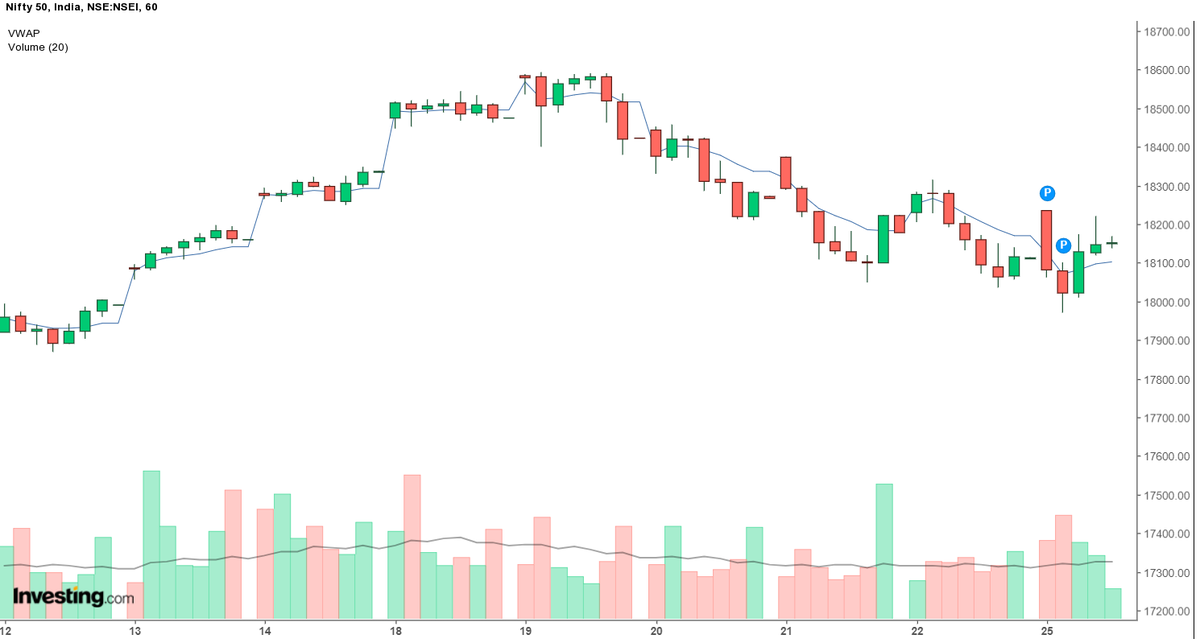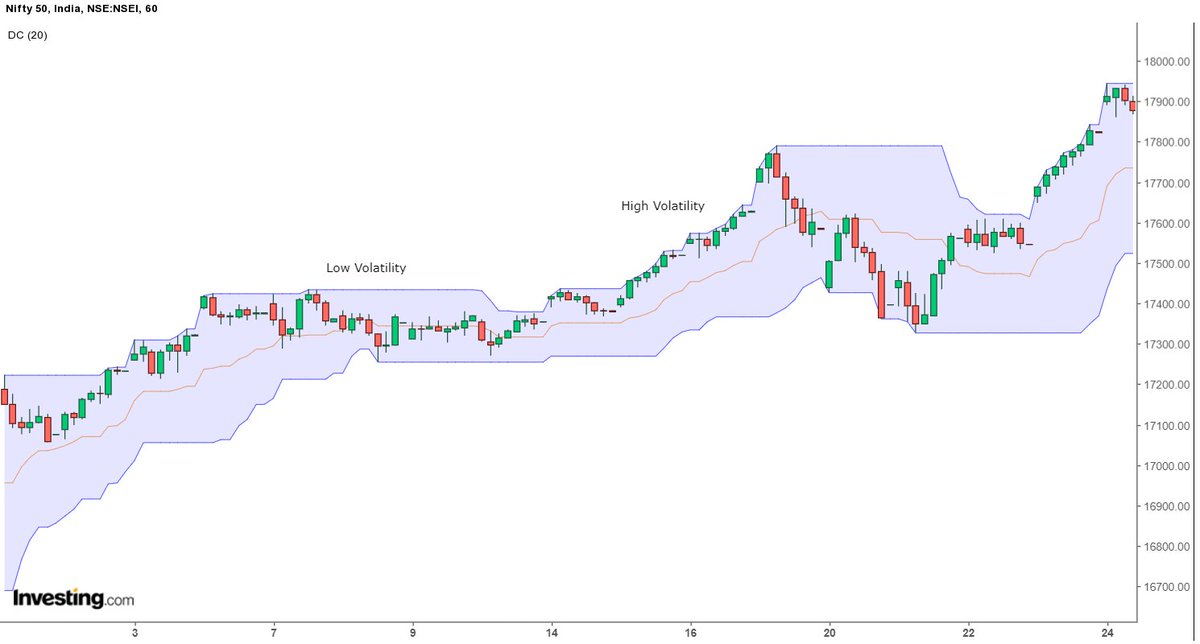
1. Supertrend: The Simplest of all indicators. It is plotted on the price chart and the current trend can be determined by its placement vis-a-vis price👇 

Generally, the default parameters are 10 for the #AverageTrueRange(ATR) (sedg.in/jd12hn59) and 3 for its multiplier👇
2. VWAP: Volume Weighted Average Price is a #Volume Indicator of the ratio of the value of a #stock traded in a particular time to the total volume traded at that Stock for a particular time👇 

This indicator indicates the trend is #Bullish when the price of a stock is above VWAP, meaning the price is above average Volume and the #trend is positive👇
3. Stochastics: Stochastic is a #Momentum indicator that has been around for a long time and is suitable for both #intraday trading, as well as #swingtrading👇 

4. Average Directional Index: The #trend is your friend till it bends. Hence, #ADX is extremely reliable when it comes to identifying the trend's strength👇 

It tells us whether the ongoing trend has the #strength to continue going up or down. ADX is measured from 0 to 100, and the higher the value of ADX, the higher is the trend strength📈 👇
5. On-Balance-Volume(OBV): A popular #volume indicator that tracks absolute volume change for speculating price movements. #Traders believe that volume drives price, because of aggressive Institutional #Investor activity 

Hence, OBV helps to track smart money flow into the market, even predicting future movements. If the value of OBV change is higher than the price change, we may see a sharp upside/downside #movement in the future👇
6. Donchian Channel: A great #volatility indicator that helps in analyzing if the volatility in the #stock is high or low. It is constructed by calculating the Highest High and the Lowest Low for a while 👇 

If there is a #breakout from the upper or lower band, it is considered as the starting of a new trend👇
Read the full blog post here: sedg.in/jd12hn59
👇
Read the full blog post here: sedg.in/jd12hn59
👇

Here are some #Intraday Trading webinars you can enroll in, to see the practical execution of the above:
1. Jay Chandran(@niftywizard) goes a level up and tries to use #MarketProfile for #IntradayTrading signals. sedg.in/rsdngb1z
An Exclusive upcoming webinar with limited seat⚡⚡👇
An Exclusive upcoming webinar with limited seat⚡⚡👇
2. (@alphabhijit) Abhijit Paul, an Intraday specialist, has devised a strategy tailor-made for Passive traders: sedg.in/ymp8s4fr
You will be immersed in a different perspective of this style of trading! 🪄
Use Code WEB20 For 20% Off!
You will be immersed in a different perspective of this style of trading! 🪄
Use Code WEB20 For 20% Off!
3. Swapnjaa Sharma (@Swapnja_Sharmaa) is a renowned name amongst #IntradayTraders! sedg.in/53yw6vex
Her simple and powerful strategies have helped thousands of traders across the country! ⭐
Use Code WEB20 For 20% Off!
Her simple and powerful strategies have helped thousands of traders across the country! ⭐
Use Code WEB20 For 20% Off!
• • •
Missing some Tweet in this thread? You can try to
force a refresh







